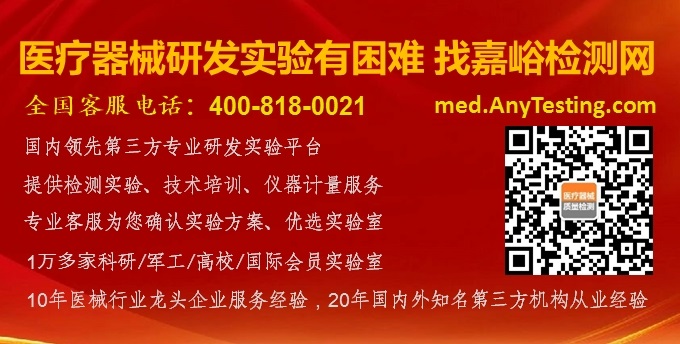欧盟MDR不仅对医疗器械进行管理,还对无医疗用途的产品进行管理,例如吸脂器械、乳房植入物和彩色隐形眼镜等。
2022年12月,欧盟通过两项委员会实施条例(2022/2346 和 2022/2347)对必要的细节进行了规范。
这周MDCG 发布MDCG 2023-5“附录 XVI 产品认证和分类指南”, MDCG 2023-6“附录XVI 产品等同性证明指南”
这些产品的制造商会发现以下资料尤其相关:
- MDR附录XVI
- 通用规范CS:欧盟委员会实施条例(EU) 2022/2346
- 分类:欧盟委员会实施条例 (EU) 2022/2347关于附录XVI产品rule 9和rule 10的重新分类
- Q&A on transitional provisions for products without an
intended medical purpose covered by Annex XVI of the MDR
- 指南MDCG:MDCG 2023-5,MDCG 2023-6
1. 受附录XVI管理的产品
MDR附录XVI 列出了六组产品。
|
|
|
|
1. Contact lenses or other items intended to be introduced into or onto the eye |
|
|
2. Devices intended to be totally or partially introduced into the human body through surgically invasive means for the purpose of modifying the anatomy or fixation of body parts with the exception of tattooing devices and piercings |
Subdermal implants such as horn implants,breast implants |
|
3. Substances, combinations of substances, or items intended to be used for facial or other dermal or mucous membrane filling by subcutaneous, submucous or intradermal injection or other introduction, excluding those for tattooing |
Dermal fillers, such as hyaluronic acid injections
|
|
4. Equipment intended to be used to reduce, remove or destroy adipose tissue, such as equipment for liposuction, lipolysis or lipoplasty |
Body shaping devices, e.g. for liposuction |
|
5. High intensity electromagnetic radiation (e.g. infra-red, visible light and ultra-violet) emitting equipment intended for use on the human body, including coherent and non-coherent sources, monochromatic and broad spectrum, such as lasers and intense pulsed light equipment, for skin resurfacing, tattoo or hair removal, or other skin treatment |
IPL equipment for hair removal or skin rejuvenation; does NOT apply to sunbeds |
|
6. Equipment intended for brain stimulation that apply electrical currents or magnetic or electromagnetic fields that penetrate the cranium to modify neuronal activity in the brain |
Non-invasivee quipment for magnetic or electrical stimulation of the brain (without a specific medical purpose) |
欧盟委员会今后可能会通过授权法案(实施细则)扩大该清单并增加新的产品类别。不过,这些产品在风险概况、特征或功能方面与相应的医疗器械相似。
2. 对无预期医疗用途的产品的要求
a) 与医疗器械的要求几乎相同
Devices without an intended medical purpose are subject to (almost) the same requirements as "regular" medical devices.
MDR第10条的要求同样适用。换言之,制造商必须:
-建立并实施质量管理系统(包括风险管理系统)
-进行临床评估
-根据MDR附录II和III编制技术文件
-进行符合性评估程序并发布符合性声明
-遵守UDI要求
-建立上市后监管系统(PMS)
-遵守报告要求(警戒系统)
-对有缺陷的器械所引起的责任作出规定,例如安排适当的保险。
MDR要求产品符合附录I所列的适用于产品的基本一般安全和性能要求GSPR。
b) 但也有不同之处
医疗器械和附录XVI产品在某些要求上有所不同。
“通用技术规范CS”主要在以下附录中描述了这些差异:
|
|
|
|
|
|
|
The annex mainly details the requirements for risk management and "information for safety," e.g., instructions for use and labeling. |
|
|
|
This annex details the additional specific risk management and information for safety requirements for this product class. |
|
|
Devices introduced into the body through surgically invasive procedures, e.g., horn implants and breast implants |
|
|
|
Facial or other dermal or mucosal fillers intended for subcutaneous, submucosal or intradermal injection or other modes of delivery |
|
|
|
Devices to reduce, remove or destroy adipose tissue |
|
|
|
Devices intended for use on the human body that emit high-intensity electromagnetic radiation, such as devices used for skin resurfacing, tattoo removal, hair removal, or other forms of skin treatment |
In addition, this Annex defines the terms "device for professional use" and "device for home use."
|
|
|
Equipment intended for brain stimulation that apply electrical currents or magnetic or electromagnetic fields that penetrate the cranium to modify neuronal activity in the brain |
This annex details the additional specific risk management and information for safety requirements for this product class. |
i)临床评估而不证明效益benefit
对于没有预期医疗用途的产品,很难按照医疗器械的要求证明其临床效益。这就是为什么第61(9)条规定的临床评估“只only”需要证明这些器械的安全性和性能,而不需要证明临床效益。
注意:有些器械可同时被视为医疗器械和附录XVI产品。例如,用于医疗和美容目的乳房植入物。在这种情况下,还必须证明临床效益。
ii)临床研究的一般要求
附录XVI产品临床研究的一般要求很有意思。只有在有足够的临床数据并已对“类似analogous”医疗器械进行过评估的情况下,才能规避这一要求。
注意:MDR使用的术语是“类似analogous”而不是“等同equivalent”。MDR中没有“类似analogous”一词的定义。
通用规范CS提供了定义:
"An analogous device with a medical purpose shall be understood as the same device with a medical purpose or a medical device for which equivalence to the same device with a medical purpose has been demonstrated by the manufacturer in accordance with Section 3 of Annex XIV to Regulation (EU) 2017/745 of the European Parliament and of the Council.”
MDCG 2020-5也给出了解释:
An analogous device, in this context, is understood as a medical device which is similar in terms of functioning and risks profile and has a medical purpose.
iii)同样,看看“通用技术规范CS”会有所帮助:
Commission Implementing Regulation (EU) 2022/2346:
"If the undesirable side-effects are of transient nature and do not require medical or surgical intervention to prevent life-threatening illness or permanent impairment of a body function or permanent damage to a body structure, residual risks may be considered as being acceptable. If one or more of the conditions laid down in this Section is not met, the manufacturer shall provide a justification explaining the reasons for the acceptability of the risks."
3. 无预期医疗用途器械的合格评定
a)符合性评定程序
MDR要求附录XVI产品采用与医疗器械相同的符合性评定程序。即使是无预期医疗用途的器械,产品的类别也决定了制造商可以使用哪种符合性评定程序。
b)分类
在MDR附录XVI产品中,这种分类也受MDR附录VIII的规则制约。然而,并非所有规则都能适用。例如,rule 9和rule 10(有源治疗和诊断器械规则)假定了医疗目的。因此,在“通用规范CS”发布的同时,还通过了另一项委员会实施条例(2022/2347),对相关产品进行重新分类:
|
产品
|
Rule
|
分类
|
|
Body shaping devices
|
4
|
IIb
|
|
Devices for skin rejuvenation, hair removal, etc.
|
5
|
Hair removal: Class IIa, otherwise IIb
|
|
Devices for transcranial brain stimulation
|
6
|
III
|
4. 附录XVI器械的过渡期
欧盟委员会的“通用规范CS”直到MDR颁布四年半后才公布。这一事实,以及医疗器械过渡期的经验,有可能导致过渡期有时比较宽松。
适用哪些过渡期取决于相关的条件:
|
场景
|
过渡期
|
条件
|
|
1. 正在进行或计划进行临床研究,且需要公告机构的参与(> class I)
|
在2028年6 月22日之前投放市场并投入使用
|
- 2023年6月22日之前首次投放市场
- 继续按照MDR颁布前的相关产品类别法规进行销售
- 设计或预期用途无重大变更
- 在2024年6月22日前完成临床研究申请application,包括监管部门的确认
- 不迟于2024年12月23日开始start临床研究
- 在2026年6月23日之前与公告机构签订符合性评估合同
|
|
2. 没有临床计划,需要公告机构的参与(> class I)
|
在2025年6 月22日之前投放市场并投入使用
|
- 2023年6月22日之前首次投放市场
- 继续按照MDR颁布前的相关产品类别法规进行销售
- 设计或预期用途无重大变更
- 在2023年9月22日前与公告机构签署合格评定合同
|
|
3. 有效的MDD证书
|
见情况1或 2,也可在证书过期后使用
|
- 2023年6月22日之前首次投放市场
- 按照MDD要求继续销售
- 设计或预期用途无重大变更
- 最迟在证书到期日之前与公告机构签订合同,以便在证书到期后继续进行监管
|
|
4.无需公告机构参与(class I)
|
在2023年6 月22日之前投放市场并投入使用
|
- 最迟在2023年6月22日之前根据MDR做出符合性声明
|
因此,过渡期取决于:
-产品首次投放市场的日期
-产品类别
-临床研究的必要性
5. 关于如何开展工作的建议
无预期医疗用途的产品制造商应遵循以下步骤:
-熟悉监管要求,这首先包括查阅本文开头列出的资料
-可用于证明符合这些要求的协调标准
-确定产品的类别
-了解临床研究是否是强制性的
-确定过渡期
-为IIa级及以上器械寻找公告机构
-建立质量管理体系,必要时对其进行认证
-编制符合性文件
-计划并开展临床研究(如适用)
-宣布器械符合性声明并上市销售
6. 结论
根据MDR附录XVI,立法者对无预期医疗用途的器械设定了非常高的要求。这很可能会导致大规模的“市场洗牌”。据推测,这正是立法者的目的所在。令人遗憾的是,立法者花了四年多的时间起草委员会实施细则,但却没有完全达到严格的标准。现在,遵守这些新要求已成为当局的责任。公告机构面临着监管市场的任务,例如通过搜索互联网商店和参观相关展会。如果不执行这些规定,立法的目标就无法实现。




